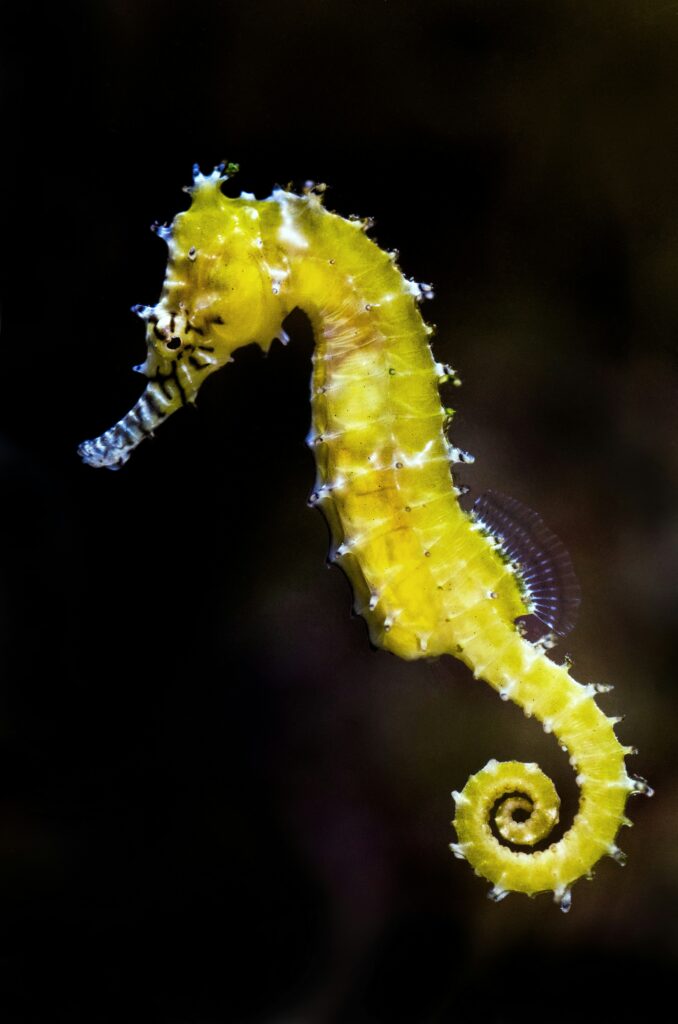Seahorses, with their unique appearance and fascinating behaviors, captivate the imagination of many. Beyond their whimsical appearance lies a world of intricate mating rituals and extraordinary parental care. In this article, we delve into the secret lives of seahorses, exploring their fascinating mating behaviors and the remarkable ways in which they care for their offspring.
Courtship Displays and Rituals
Courtship displays and rituals are fascinating behaviors observed in various species across the animal kingdom. These displays serve the primary purpose of attracting a mate and initiating the mating process. They often involve intricate movements, vocalizations, and visual cues tailored to the specific species’ characteristics and environmental factors.
Types of Courtship Displays:
Courtship displays can vary greatly depending on the species and can include:
1. Visual Displays: Many species rely on visual cues to attract mates. This may involve elaborate dances, vibrant plumage or coloration, or displays of physical strength and agility. For example, male peacocks showcase their iridescent tail feathers in a stunning display to attract females.
2. Vocalizations: Vocal communication plays a crucial role in courtship rituals for numerous animals. Birds, frogs, and mammals often use complex songs or calls to attract potential mates. These vocalizations can convey information about the individual’s fitness, genetic quality, and readiness to mate.
3. Scent Marking: Some species utilize chemical signals to communicate their reproductive status and attract mates. This can involve marking territory with pheromones or emitting specific scents that signal readiness to mate. For instance, male lions use scent marking to establish their territory and attract females.
4. Ritualized Behaviors: Courtship rituals may involve specific sequences of behaviors that serve to establish compatibility between potential mates. These rituals can include grooming, gift-giving, or synchronized movements that demonstrate cooperation and mutual interest.
Significance of Courtship Displays:
Courtship displays are essential for ensuring successful reproduction within a species. They allow individuals to assess potential mates based on various factors such as genetic compatibility, health, and parental investment. Additionally, courtship rituals can strengthen pair bonds and establish social hierarchies within populations.
By observing courtship displays, researchers gain valuable insights into evolutionary processes, mate selection strategies, and the role of sexual selection in shaping animal behavior. These displays highlight the incredible diversity of tactics employed by organisms to navigate the complex world of mating and reproduction.
Seahorse Pregnancy: Insights into Male Gestation
Seahorses, belonging to the genus Hippocampus, are unique among fish species due to their fascinating reproductive biology. One of the most remarkable aspects of seahorse reproduction is the role reversal in parental care, where the male seahorse carries and nurtures the developing embryos in a structure called the brood pouch.
Male Gestation in Seahorses:
Unlike most other fish species where females typically carry and protect the developing eggs, male seahorses possess a specialized pouch where fertilization and embryo development occur. After a courtship ritual involving intricate dances and displays, the female seahorse transfers her eggs into the male’s brood pouch through a specialized tube called an ovipositor.
Once inside the male’s pouch, the eggs are fertilized by the male’s sperm. The male then undergoes a period of gestation, ranging from several days to several weeks, depending on the species. During this time, the male provides nutrients and oxygen to the developing embryos through a network of blood vessels within the pouch.
Unique Adaptations for Male Brood Care:
The evolution of male pregnancy in seahorses is believed to have resulted from selective pressures favoring increased paternal investment in offspring survival. By assuming the role of primary caregiver, male seahorses can ensure optimal conditions for embryo development and protect their young from predators.
The brood pouch of male seahorses is a highly specialized structure equipped with mechanisms to regulate temperature, salinity, and oxygen levels, creating an ideal environment for embryo development. Additionally, male seahorses are capable of contracting their pouch muscles to provide gentle movements that mimic the natural swaying of seaweed, promoting proper aeration and preventing the embryos from clumping together.
Male seahorses also exhibit remarkable behavioral adaptations during gestation, such as reducing their activity levels and avoiding potentially stressful situations to minimize the risk of harming the developing embryos. This dedicated parental care continues even after the fry hatch, as male seahorses actively participate in their offspring’s survival by providing shelter and nutrition until they are capable of independent feeding and locomotion.
Understanding the intricacies of seahorse pregnancy sheds light on the diverse reproductive strategies employed by marine organisms and underscores the importance of parental investment in ensuring the success of future generations.




